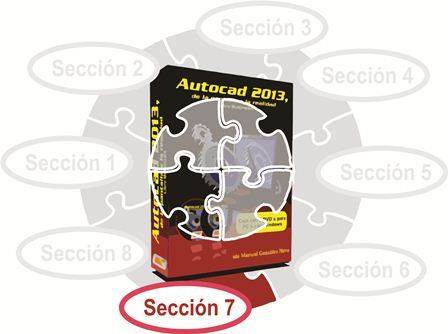Publishing and Printing with AutoCAD - Seventh 7

CHAPTER 31: AUTOCAD AND INTERNET
It is almost public knowledge of what the Internet is. The absolute majority of computer users know that it is a network of computers arranged around the world. The computers that make it up are called Servers and are the ones to which most of the Internet users connect.
The Internet, in turn, is the product of an American military experiment called Arpanet and in its beginnings its most widespread application was electronic mail.
With the arrival of the World Wide Web, which meant an efficient way of transmitting data presented in the form of pages, the Internet was popularized and extended to the current levels. It is an excellent method for the search and transmission of information, as well as communication between its users, and its uses are long to list, from the simple presentation of commercial information of a company and its products, to the mechanism for conducting commercial transactions. and banking, going through various academic applications, research, interaction between people through social networks, and so on. This, of course, has also meant a change that enhances collaboration in projects carried out with Autocad.
Let's see how Autocad interacts with the Internet for the development of projects.
31.1 Access to remote files
As you may have noticed, nowhere in this course do we review how to open and burn Autocad files. This is due to the fact that it is a common task that we presuppose the reader knows, besides that it is very simple. But we must mention this task here because one of the first extensions that was given to Autocad, related to the Internet, is the possibility of accessing files located on network servers without involving additional work for the user.
The File Open dialog allows you to define an Internet address (commonly known as URL) as the DWG file source to open.
In the same way, we can record the changes made to our drawings in specific URLs, since the dialog to record works exactly like the one to open, but consider that it requires the corresponding write permissions on the server, and even that the configuration of it is correct so that it can be performed without problems, so surely this process must pass through the server administrator or the page. In many cases, it may be preferable to save the file to your own computer and then transfer it to the Server through a program called FTP that already has the connection account configured. That will depend on your method of work and experience about it.
If we know the URL where the drawing is to be opened, but not the name of the drawing, then we can use the Search button on the Web, which will open a new dialog box consisting of an Internet mini-browser that will help us to arrive to the link of the desired file, as long as the page has been arranged in that way, that is, with links to those files through a conventional web page, since these may reside on the Server, but not be available through of a hyperlink.
31.1.1 External References
The above is valid for the location of the External References files of a drawing. As you will recall, in the 24 chapter we saw that external references are files that can be integrated into the current drawing but that remain independent of it. The extended features of Autocad with Internet make the geographic location of the file irrelevant, since the External References Manager also supports Internet addresses as if it were any folder on our own hard drive and remember that for insertion we use a table dialog identical to the one we use to open files.
31.2 eTransmit
However, it is very likely that many companies do not have their own servers, or have not hired space on any server for the drawings of the company. Small engineering or architecture firms may only require an economic and quick mechanism to transmit their drawings by email. For them, Autocad offers a simple mechanism to compress DWG files to the maximum so that their transmission over the Internet is accelerated.
The Publish-eTransmit menu option opens a dialog box that serves to compress the current drawing along with the fonts and other necessary files into a new compressed file in .zip format. The dialog box also allows you to add other drawings and generates a text file with notes pertinent to the files directed at the recipient.

